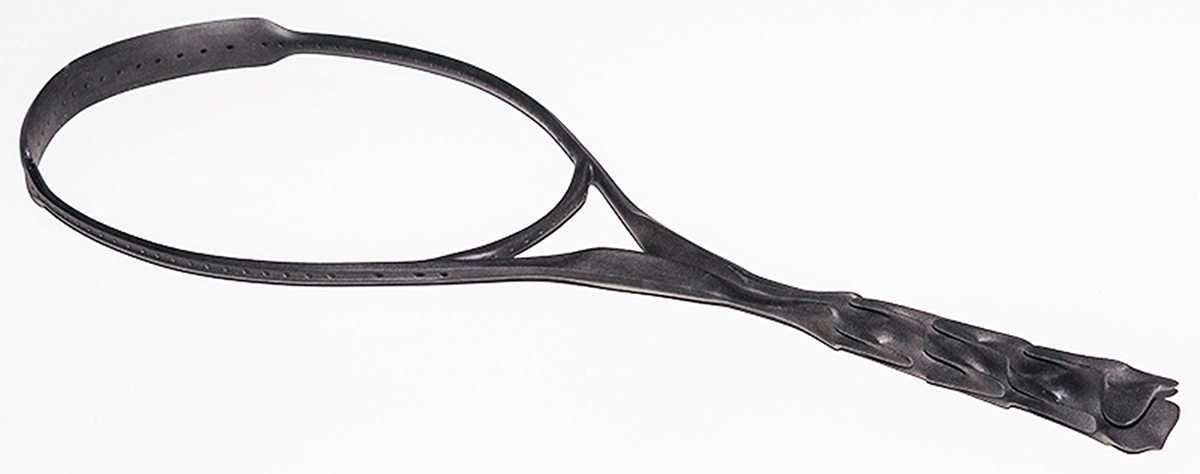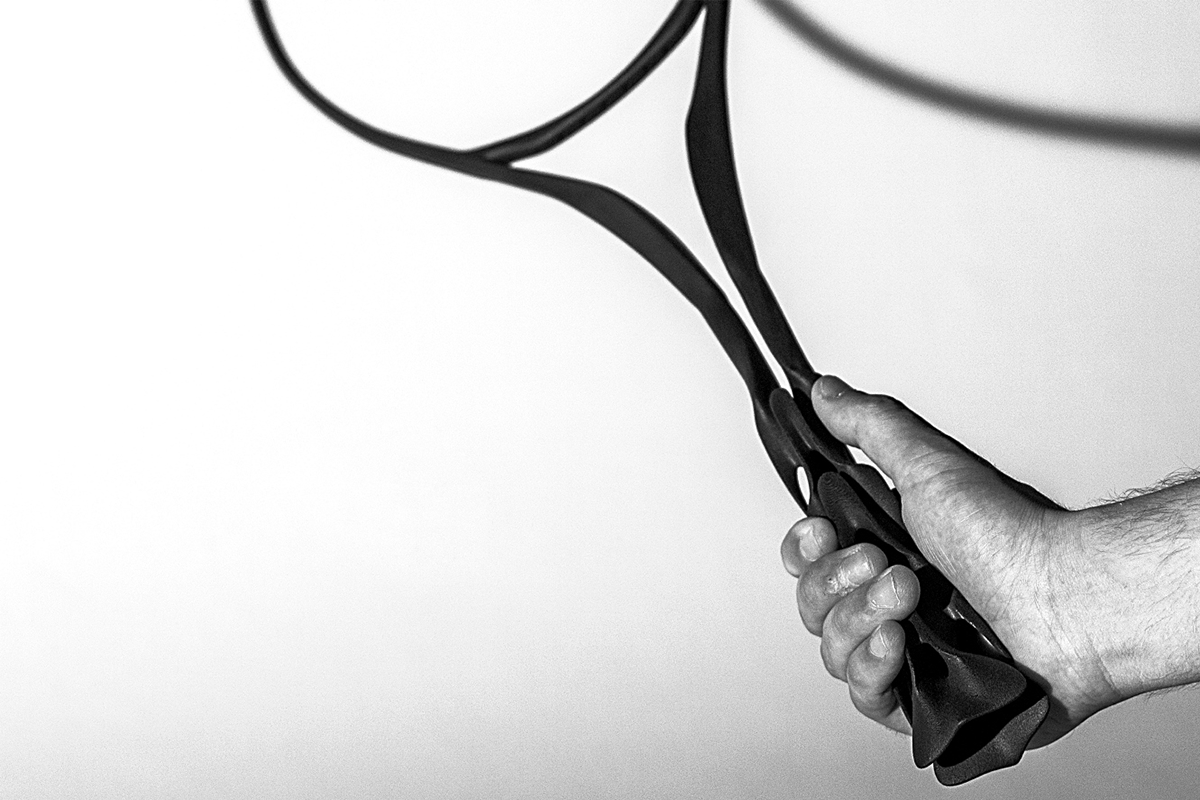The objects of the future will have increasingly complex shapes that will give them superior properties through their design and the materials they will be made from. Articles such as a “simple” tennis racket – which would seem to have reached the peak of its technological development – will be revolutionized by the new possibilities offered by the science of materials and additive manufacturing.
CRP Group, a leading developer of advanced materials for AM and rapid prototyping service provider, helped Mario Coppola and Salvatore Gallo, two students from the Academy of Fine Arts in Rimini, to completely reimagine the handle of a tennis racket without limits in terms of complex geometries, making it more streamlined and responsive, while introducing sufficient aesthetic improvements.
Thanks to 3D printing, this futuristic concept did not remain confined to the computer screen but it was actually produced. The prototype was designed by separating the racket into it main parts: the neck, throat and head, studying each one for structural variants that would not affect the homogeneity of the whole body and the balance between the different components.
To make it lighter and more resistant at the same time, CRP laser sintered the 3D model using its Windform XT 2.0 material, a compound of nylon reinforced with carbon fiber. This material ensures top performances so that it is used by CRP – which is based in Modena, not far from Ferrari – for its work with Formula 1 and NASCAR motorsports companies, and even in the aerospace industry, for the production of “low-cost” nanosatellites able to withstand the extreme conditions of space.
The mechanical properties of the Windform XT 2.0 ensure a strong resistance to stress and impact damage; and CRP is not new to this type of experiment. In the past the company worked with Daniele Cedola Design Studio to create Livrea 26, the first model of a Yacht entirely 3D printed, and with Studio MHOX to create a line of designer Scunzani belt buckles.
The Modena-based company, which also has branches in the US, has been pushing the limits of SLS technology by supporting projects from young designers and, along with numerous other rapid prototyping companies in Italy, it is contributing to boost the Italian economy at a time in which neither the government nor the traditional industry sectors seem to to be able to find a way out of the nation’s deep economic woes. Just like in tennis, sometimes a good run starts with one well placed shot.






